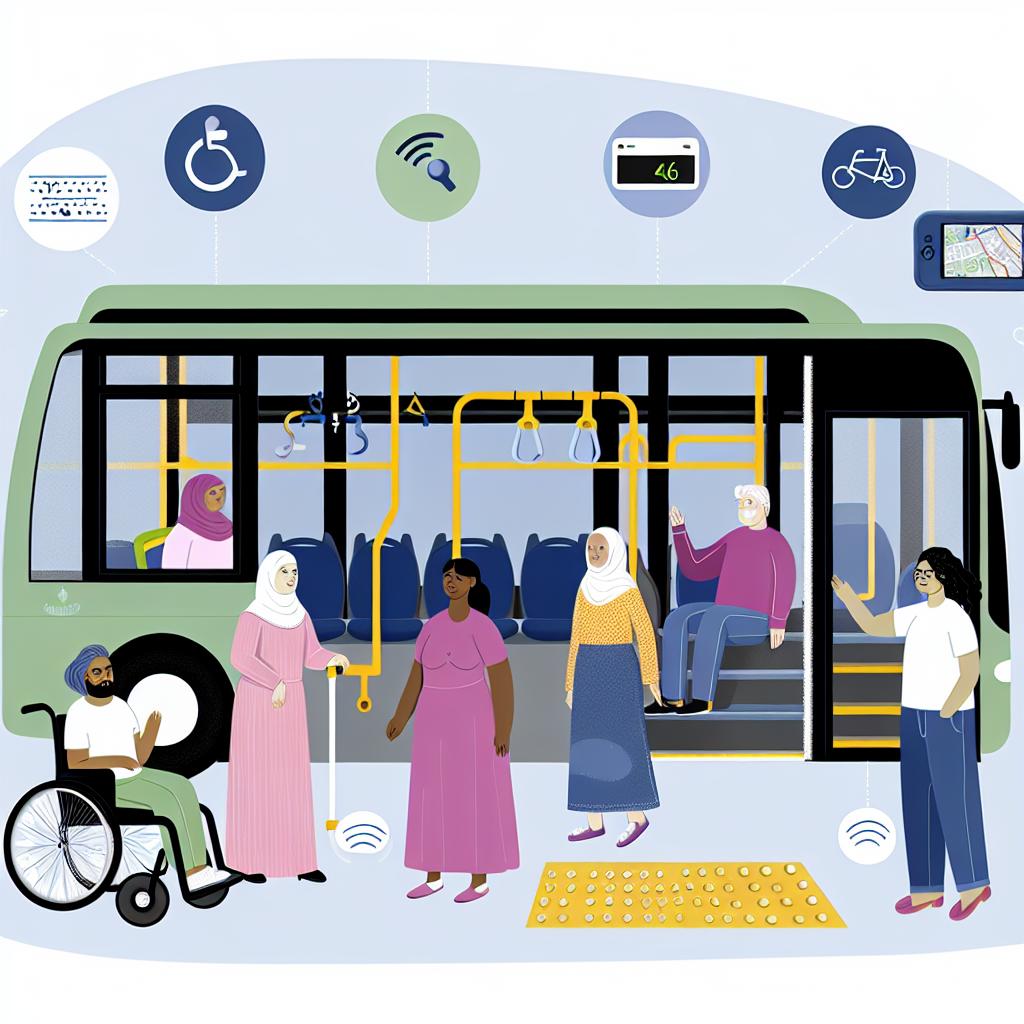Understanding Accessible Public Transportation
Accessibility in public transportation is a critical consideration in urban planning, aiming to offer equal opportunities for everyone, including individuals with disabilities. Assistive technology plays a vital role in making public transportation more inclusive and accessible.
The Importance of Accessibility
Public transportation is a crucial service that provides mobility and independence for individuals, including those with disabilities. The design and planning of these systems focus on the need to create an environment where transportation systems are easy to navigate and usable by everyone, regardless of physical or cognitive abilities. Accessibility is not just a matter of convenience but a significant aspect of social inclusion, allowing people access to essential services, jobs, education, and leisure activities.
When public transportation systems are accessible, they reduce dependency on specialized transport services, often costly and limited. This integration into mainstream transit can usher in socioeconomic benefits, increase participation in community activities, and enhance the quality of life for people with disabilities. Moreover, it contributes to an inclusive societal framework where public spaces and services cater to the diverse segments of the population.
Understanding Assistive Technology
Assistive technology refers to any item, piece of equipment, or product system that enhances the functioning of individuals with disabilities. These tools aim to level the playing field, providing individuals with the means to perform tasks that might otherwise be difficult or inexistent. In the context of public transportation, these technologies can be utilized to improve accessibility and make transit systems more inclusive. This is achieved through technological innovations that address physical barriers, sensory impairments, and cognitive challenges, thereby making public transportation systems more accommodating to all users.
Examples of Assistive Technology in Public Transportation
Assistive technology used in public transportation can range from digital tools to physical infrastructure enhancements:
Digital Apps and Information Systems: Digital applications and information systems are increasingly integrated into public transit systems, providing critical aid to users with disabilities. Apps that give real-time updates on public transport schedules and routes are immensely valuable for navigation. These applications often feature enhancements, such as voice announcements and vibrations, which assist individuals with visual impairments in understanding transit information without needing additional help. Additionally, geo-location-based reminders and alerts enable all users to reach their destinations more efficiently.
Audio-Visual Announcements: Implementing audio announcements and visual displays within transit systems ensures that real-time information is communicated effectively. For example, train stations and buses can announce stops audibly while displaying information on screens to accommodate the needs of individuals with visual and auditory impairments. This multi-modal approach ensures that critical information is accessible to everyone, fostering independence in using public transit and reducing reliance on third-party aids.
Physical Infrastructure Enhancements: Enhancements to the physical infrastructure of public transportation are crucial in making systems more accessible. Features such as ramps are vital for wheelchair users, while tactile flooring aids those with visual impairments. Designated seating areas prioritize comfort and accessibility for individuals with mobility challenges, offering grab rails and strategic placement within vehicles to ensure stability and security. These elements transform the accessibility landscape, making public transportation facilities welcoming to all.
Challenges and Future Directions
Despite advancements, several challenges remain. funding is a significant issue, with many regions needing more resources to implement technology solutions across all transit systems thoroughly. Achieving widespread implementation of assistive technology in public transit demands substantial investment, which is often stalled due to budget constraints and competing priorities within urban development agendas. Moreover, the diversity of disabilities presents a challenge in designing universally accessible solutions. Every assistive strategy needs to account for variability in user needs, adding complexity to the integration process.
The future direction of accessible public transportation will likely rely on advances in technology, including the integration of artificial intelligence for more personalized transport solutions. Data-driven approaches could allow transit operators to predict and respond dynamically to user needs, enabling customized travel experiences that consider passengers’ disabilities. For example, adaptive routing technologies can alter bus or train services on-demand to accommodate real-time requests from users with special access requirements.
Furthermore, the advent of autonomous vehicles offers a new horizon for accessibility in public transit. Driverless transport modes can provide tailored services to individuals with disabilities, potentially revolutionizing travel independence and convenience. Innovations in digital services, such as automated travel companions and robotic assistance at stations, may also enhance freedom and accessibility for all users, offering seamless travel experiences in urban environments.
For further reading on transportation accessibility and emerging assistive technologies, visit ADA’s website and similar dedicated platforms focusing on accessible transit solutions.
Accessible public transportation, enhanced through assistive technology, holds transformative potential for societies around the globe, fostering greater independence and equality for individuals with disabilities. As the world evolves towards more inclusive urban landscapes, integrating accessibility into public transit systems not only elevates the travel experience for those with disabilities but also ensures a cohesive, equitable community infrastructure.
